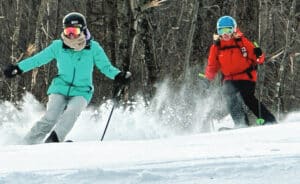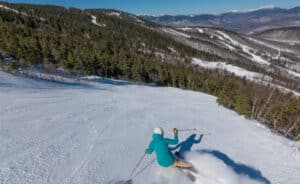
Is it outside the realm of possibility for you to hire your own personal ski coach to be with you every day you’re out on the mountain — all season long — to watch and analyze every movement, every turn you make, and then be there to provide instant feedback on how to improve your technique and style?
Judging by the nature of skiing, that kind of premium service and attention would come with a hefty price tag, which doesn’t even factor in the tip.
Fear not, for Elan is telling us there is another way. The company — during ISPO Munich 2018 — gave the world a glimpse of its new Smart Ski Technology that effectively provides virtual coaching to anyone who seeks it. Elan demonstrated the technology at ISPO by integrating the sensors into its high-performance SLX Fusion ski, capturing data from the sensation of skiing and then relaying that data onto a computer screen.
While the concept is still in its prototype stage and not yet available for consumers to purchase and take out on the hill, industry insiders suggest it is imminent. And why wouldn’t it be? After all, we now have self-driving cars on our roadways and who would’ve thought that would happen as quickly as it did?



